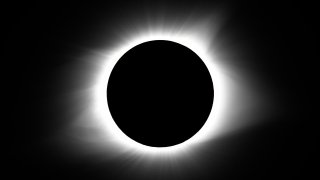
A “devil comet” known for its occasional outbursts is currently visible in the night sky, and lucky stargazers may even be able to spot the celestial object during next month’s much-anticipated solar eclipse, according to NBC News.
Comet 12P/Pons-Brooks was nicknamed the "devil comet" because an eruption last year left it with two distinct trails of gas and ice in the shape of devil horns.
At the moment, the comet is visible from the Northern Hemisphere with binoculars and telescopes. But by the end of the month, the comet may be visible to the naked eye as it swings through the inner solar system and reaches its closest point to the sun in mid-April.
A comet typically has a core of dust, gas and ice surrounded by bright clouds of gas known as the coma. These celestial objects are “frozen leftovers from the formation of the solar system” and some of the largest can measure tens of miles wide, according to NASA.
Get top local stories in Philly delivered to you every morning. >Sign up for NBC Philadelphia's News Headlines newsletter.
Sunlight and solar radiation can heat a comet’s core, sometimes causing violent outbursts, as has happened several times with Comet 12P/Pons-Brooks.
The comet can be seen in the early evenings from the Northern Hemisphere by gazing toward the west-northwest horizon. It is expected to brighten through the end of the month and will be visible, if local conditions are clear and dark, until early May.
If the comet flares significantly in the coming weeks, it’s possible that the “devil comet” will be visible during the upcoming total solar eclipse April 8. Only those in the path of totality — a band that cuts across the country from Texas northeast to Maine where the moon will fully block the sun’s light — would be treated to the double sky show, and the forecast for such a rare, synchronized event remains uncertain.
U.S. & World
Stories that affect your life across the U.S. and around the world.
Even still, there should be ample opportunities to spot the comet on its own in the evening sky.
Comet 12P/Pons-Brooks was discovered in 1812 by a French astronomer, Jean-Louis Pons. It was observed again in 1883 by British-American astronomer William Brooks. Sightings of the comet are rare because it takes 71 years to orbit around the sun.
This article first appeared on NBCNews.com. Read more from NBC News:



